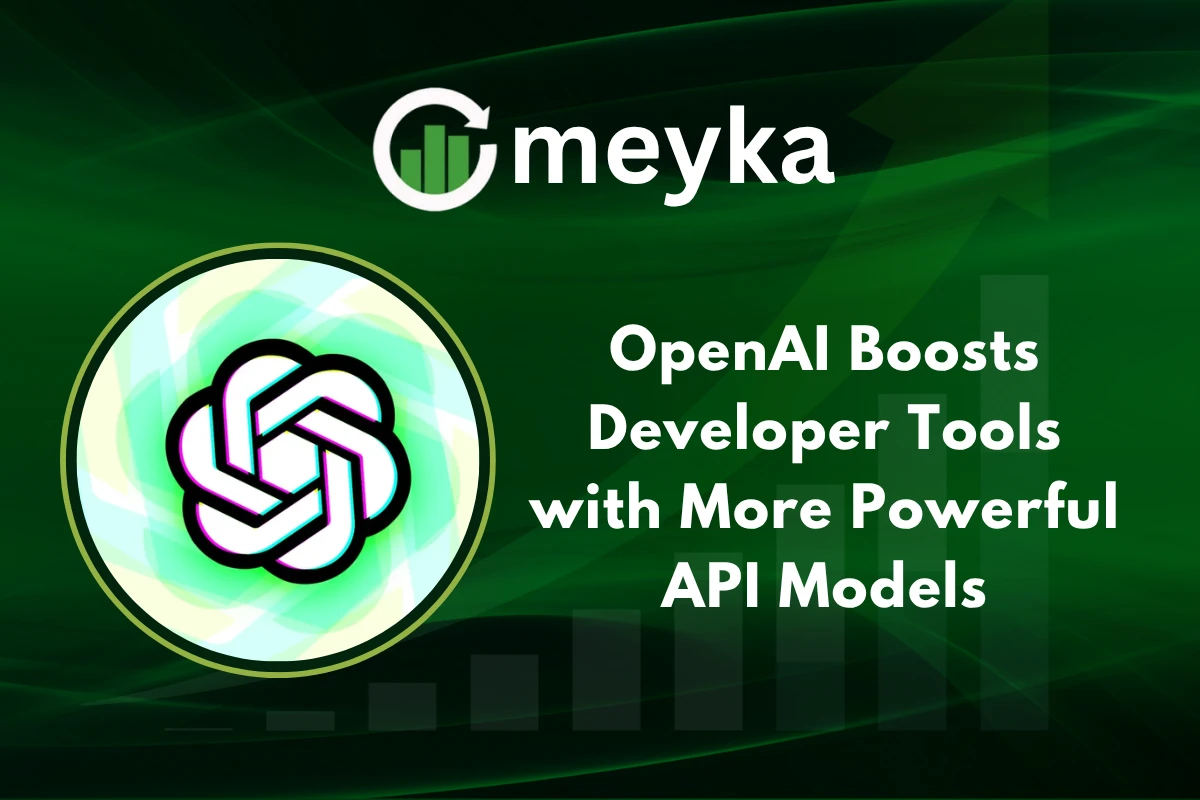OpenAI Boosts Developer Tools with More Powerful API Models
OpenAI unveiled a major set of developer-focused API upgrades at its Dev Day, putting GPT-5 Pro, the Sora 2 video model, and a lower-cost real-time voice model into the API. These changes are aimed at giving developers higher accuracy, richer media capabilities, and cheaper voice interactions for apps.
The upgrades make it easier to build advanced features into products, from enterprise workflows to creative apps.
OpenAI: The Major API Updates Explained
What changed in the API
OpenAI added GPT-5 Pro for deeper reasoning tasks, Sora 2 for audio and video generation, and gpt-realtime mini, a cheaper, low-latency voice model. Developers can now access the same video and voice capabilities that power OpenAI’s consumer products, directly through the API. These additions expand the API from text-only to a multimedia development platform.
Why these models matter for developers
GPT-5 Pro targets domains like finance, law, and healthcare, where higher accuracy and longer context matter. Sora 2 lets developers generate synchronized sound and visuals from text prompts.
The gpt-realtime mini model cuts voice costs substantially, enabling low-latency audio apps that were previously too expensive to run at scale.
Why is OpenAI focusing more on developers? Developers build the apps that scale platform adoption, and richer API models make it faster to ship production-grade AI features.
OpenAI: How Developers Benefit from the New Tools
Faster prototyping and richer apps
Developers can prototype end-to-end experiences with text, voice, and video from a single provider. That reduces integration overhead and makes it simpler to iterate. The new tools speed up creative workflows and shorten time to market.
Cost and performance improvements
The real-time voice model is significantly cheaper than previous voice offerings, which lowers operating costs for audio-first apps. That can unlock new classes of products, from accessible voice assistants to real-time customer support bots.
What does this mean for small teams? Lower-cost voice and built-in video tools let small teams build features that once required larger budgets and specialist suppliers.
OpenAI: Comparing New Models to Previous API Versions
Technical advances over older models
GPT-5 Pro offers longer context windows and deeper reasoning than prior models, while Sora 2 improves physical consistency and synchronized audio-visual output. OpenAI framed these as moves from “lab models” to production-grade engines.
Migration and backward compatibility
OpenAI is exposing these capabilities through the existing API surface, so many teams can upgrade without a full rewrite. That eases adoption and reduces migration friction for enterprise users.
Is migration simple for teams using older GPT models? Often yes. OpenAI designed the rollout to be accessible via the API, but testing is essential when switching model families.
OpenAI: Impact on Startups and Enterprise Integrations
Startups and product differentiation
Startups gain an edge by shipping richer experiences quickly. Sora 2 and the cheaper voice model let small teams add multimedia features that differentiate apps in crowded markets. That lowers the barrier to entry for creative and media-first products.
Enterprises and compliance needs
Enterprises will focus on reliability, accuracy, and governance when adopting GPT-5 Pro. OpenAI highlighted accuracy and reasoning improvements, which matter for regulated sectors. Many companies will pilot vertical workflows before full adoption.
What does this mean for AI in regulated industries?
Short answer: better accuracy and longer context make production use more feasible, but governance remains key.
OpenAI: Community Reactions and Developer Sentiment
Early developer feedback and social signals
Developer discussion on X and technical forums lit up after the announcement. OpenAI’s developer account and other community handles posted reactions that show excitement about the new API capabilities. See posts such as OpenAI’s own announcement and community replies:
Community members also shared hands-on reads and technical notes:
These links record the live developer response and practical impressions.
Industry voices and analyst takes
Writers and analysts noted that packaging video, audio, and language models in one API accelerates product development. Some community posts praised the cost reductions for real-time voice and flagged the video model as a productivity multiplier for creative teams.
The rollout sparked both enthusiasm and scrutiny over safety and governance.
Why are developers excited? Integrated, cheaper multimedia models reduce complexity and unlock new product ideas.
OpenAI: Competitor Context and Market Position
How OpenAI stacks up to peers
OpenAI’s move emphasizes integration and developer reach. Competitors have focused on specialized models or safety tooling, but OpenAI is centering the developer experience by offering a broad stack in the API. This strengthens OpenAI’s position as a go-to platform for multi-modal applications.
What startups and big tech will watch
Rivals will monitor uptake, pricing pressure, and how well OpenAI addresses governance concerns. The industry will assess whether integrated APIs reduce vendor fragmentation or raise concentration risks for developers and enterprises.
Will this change the competitive landscape? It pressures rivals to match integration and developer support, while raising new questions about portability and vendor lock-in.
OpenAI: Safety, Governance, and Developer Responsibility
Safety guardrails and misuse prevention
OpenAI discussed safety as part of the Dev Day narrative. As models handle richer media, content moderation and misuse mitigation grow more complex. Developers and platform teams must plan governance and content controls, especially when generating video and audio.
API-level controls and enterprise features
OpenAI is rolling out tools to help enterprise customers govern outputs and monitor model behavior. Those investments matter for regulated industries and large-scale deployments. Developers should review compliance options during integration.
Conclusion: What OpenAI’s API Upgrades Mean for Developers and Industry
OpenAI has accelerated its developer strategy by bringing GPT-5 Pro, Sora 2, and cheaper real-time voice models into its API. The move simplifies building advanced, multimedia apps, lowers some cost barriers, and tightens OpenAI’s grip on the developer ecosystem. It also raises governance needs as audio and video generation scale in production.
For startups, the updates unlock new product roads, while enterprises gain more viable AI building blocks for regulated use cases. Watch adoption rates, pricing trajectories, and safety features as the next signals for how this upgrade reshapes the market.
FAQ’S
The OpenAI API allows developers to integrate powerful AI capabilities like text generation, image creation, and voice interaction into their apps. It’s widely used for chatbots, automation tools, and creative applications.
The GPT-4 Turbo and GPT-5 Pro models are best for coding tasks. They provide advanced reasoning, code generation, and debugging support for languages like Python, JavaScript, and C++.
To improve performance, developers should optimize prompts, use caching for repeated queries, and select lightweight models when speed matters. Efficient API usage helps reduce latency and cost.
OpenAI is often considered to have the best API for natural language understanding and creative AI. However, Google DeepMind and Anthropic are also strong competitors in the developer ecosystem.
The OpenAI API offers limited free credits for new users, but most usage requires a paid plan based on tokens consumed. Pricing depends on the model and request type.
To use an OpenAI API model, sign up on the OpenAI platform, generate an API key, and integrate it into your app or script. Developers can call endpoints using Python, Node.js, or any REST client.
Disclaimer
The above information is based on current market data, which is subject to change, and does not constitute financial advice. Always do your research.






